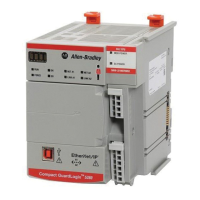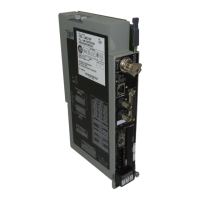Rockwell Automation Publication 1756-UM001M-EN-P - February 2012 113
Serial Communication (1756-L6x controllers only) Chapter 6
DF1 Radio Modem Limitations
These considerations must be made if you can implement the new DF1 radio
modem driver in your radio modem network:
• If all of the devices on the network are ControlLogix controllers, you must
configure them with the DF1 radio modem driver by using RSLogix 5000
software, version 17 or later. If not, then make sure that all of the nodes can
support the DF1 radio modem protocol.
• If each node receives the radio transmissions of every other node, being
both within radio transmission/reception range and on a common
receiving frequency (either via a Simplex radio mode or via a single,
common, full-duplex repeater) the radio modems must handle full-duplex
data port buffering and radio transmission collision avoidance.
If this is the case, you can take full advantage of the peer-to-peer message
initiation capability in every node (for example, the ladder logic in any
node can trigger a MSG instruction to any other node at any time).
If not all modems can handle full-duplex data port buffering and radio
transmission collision avoidance, you may still be able to use the DF1 radio
modem driver, but only if you limit MSG instruction initiation to a single
master node whose transmission can be received by every other node.
• If not all nodes receive the radio transmission of every other node, you may
still be able to use the DF1 radio modem driver, but only if you limit MSG
instruction initiation to the node connected to the master radio modem
whose transmissions can be received by every other radio modem in the
network.
• You can take advantage of the ControlLogix controller channel-to-channel
passthru to remotely program the other nodes by using RSLinx Classic
software and RSLogix 5000 software running on a personal computer
connected to a local ControlLogix controller via DH-485, DH+, or
Ethernet network.

